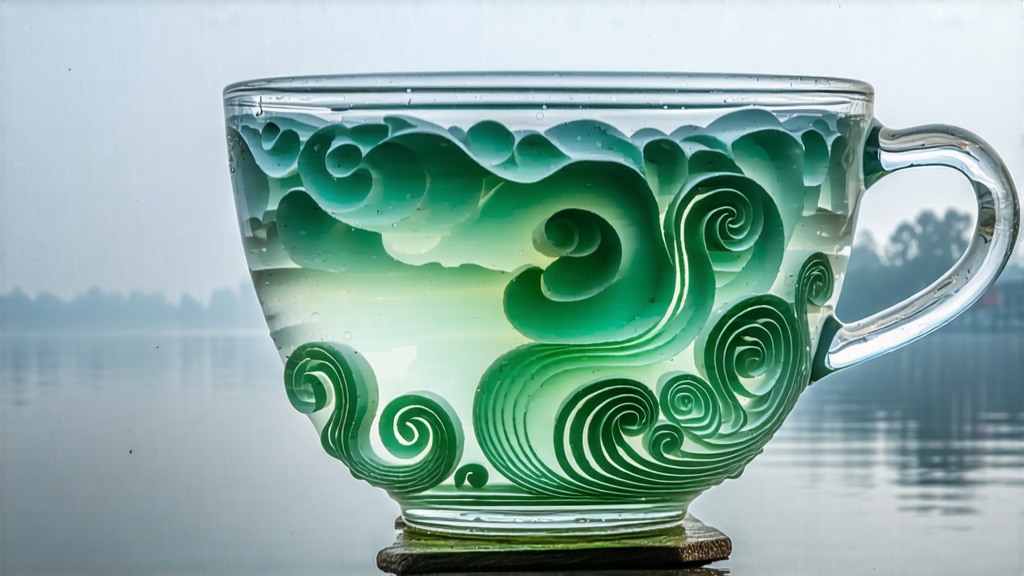
Tucked between the mist-laden hills of Dongting Mountain and the gentle ripples of Taihu Lake in Jiangsu Province, Biluochun—literally “Green Snail Spring”—has captivated Chinese tea lovers since the late Ming dynasty. Legend claims a tea picker ran out of basket space and tucked fresh shoots between her breasts; the warmth released an intoxicating perfume that startled monks in a nearby temple. Whether myth or marketing, the story captures the tea’s signature trait: an aroma so lush it seems alive. Foreign travelers who encounter Biluochun for the first time often mistake the dry leaf for a fine seaweed or even a spice, so tight are its spirals and so oceanic-sweet its scent. Yet within those tiny coils lies one of China’s most nuanced green teas, a cup that carries the breeze of apricot blossoms, the minerality of lake-cooled air, and the craft of artisans who can finish only 500 g in a full day’s work.
History and Terroir
Recorded references appear in 1699, when the Kangxi Emperor tasted the tea on an inspection tour and renamed it Biluochun for its snail-shell shape and spring harvest. Before imperial patronage, locals called it “Xia Sha Ren Xiang” (“scary fragrance”), claiming its perfume was almost too vivid. The appellation speaks to the tea’s birthplace: an island micro-climate where citrus, peach, and loquat trees intercrop with tea bushes. These fruit trees bloom at the same time the tea flushes, allowing pollinating insects to cross-scent the leaf. The lake’s water mass moderates temperature, creating morning fog that filters sunlight and slows photosynthesis, building amino acids that translate into sweetness. Soils are acidic granite-sand mixed with river silt, free-draining yet mineral-rich. Within a five-kilometer radius the leaf is protected by a geographical indication; step beyond it and the same cultivar yields flat, less fragrant tea.
Cultivars and Grading
Although the original landrace is a small-leaf Camellia sinensis var. sinensis known locally as Dongting群体种, clonal selections such as Fuding Dabaicha and Wuniuzao have been introduced to extend the picking window. Purists insist only the heirloom strain delivers the layered bouquet, yet skilled makers can coax excellent cups from clones. Grading follows a 1–7 scale set by the Suzhou Tea Association. Grade 1 consists solely of the bud, called “tippy snail,” picked before Qingming festival; Grade 3 includes one bud and the immediate leaf; Grade 7 allows two leaves and a stem, destined for restaurants where price trumps delicacy. International buyers often encounter “Special Grade” or “AAA” labels—unofficial terms that can disguise lower leaf. True top grade weighs almost nothing: 50 000 buds yield 500 g, each bud 1.2–1.5 cm long and rolled into a spiral no thicker than a matchstick.
Plucking Discipline
Harvest begins at dawn when leaf moisture is above 78 % and ambient temperature below 15 °C. Pickers wear cotton gloves to avoid hand cream contamination and use shallow bamboo trays perforated for airflow. The classic standard is “early, tender, clean, and consistent.” Early means within a ten-day window; tender limits the leaf to unopened buds; clean forbids broken tips or dewdrops; consistent demands uniform length so that frying times align. A veteran can pluck 600 g of fresh leaf in four hours; novices often bruise the bud, turning it mahogany within minutes. The leaf is then carried to the village alleyways where the scent of magnolia drifts above wood-fired woks.
Crafting the Spiral
Biluochun is the only famous Chinese green tea that is pan-fired and hand-rubbed while still warm, a dual technique borrowed from both Longjing and Taiwanese oolong. The process, called “killing green, rolling, and drying in one breath,” lasts precisely 40 minutes. First, 250 g of leaf are thrown onto a wok held at 180 °C. With bare palms the maker flips the leaf for 3–4 minutes until it emits a faint popcorn note. Temperature drops to 70 °C and the real shaping begins: palms compress the leaf against the wok, a quarter-turn twist repeated thousands of times. The motion must be spiral, not linear, to create the snail shell. If pressure is excessive, the bud snaps; too light, the coil loosens and the tea oxidizes later in storage. When